The Big Dipper, or the Plough – is a large asterism consisting of seven stars located in the constellation of Ursa Major. Six of these stars are of the second magnitude, while the seventh, Megrez, of the third magnitude.
Key Facts & Summary
- The Big Dipper asterism is among the most easily recognizable asterisms in the night sky.
- This asterism is well-known throughout many cultures around the globe and goes by many names, among them, the Plough, the Great Wagon, Saptarishi, and the Saucepan.
- The Big Dipper is a prominent asterism in the northern sky in the summer and is one of the first star patterns learned in astronomy.
- The Big Dipper asterism is commonly confused for the constellation, Ursa Major, itself. Thus, sometimes its name is used synonymously with the Great Bear.
- The Big Dipper is not a constellation, but rather it is the most visible part of the Ursa Major constellation, the third largest of all 88 constellations.
- The constellation of Ursa Major thus covers a larger area of the sky than the Big Dipper, however, the stars’ that mark the celestial bear’s head, torso, legs, and feet are not as bright or as easy to see as the seven stars of the Big Dipper that mark its tail and hindquarters.
- The seven stars that make up the Big Dipper asterism are Alioth, the brightest star in Ursa Major, Dubhe, Merak, Phecda, Megrez, Mizar, and Alkaid.
- One of these stars, namely Alkaid, was among the 15 Behenian stars used in magic rituals in the medieval period.
- The closest star to us of the Big Dipper asterism is the subgiant star Merak, located at around 79.7 light-years away.
- The farthest star to us of the Big Dipper asterism is the second-brightest star of Ursa Major, the bright orange giant Dubhe, located at around 123 light-years away.
- The Big Dipper stars, Dubhe and Merak, are used in finding the North Pole Star, Polaris.
The Big Dipper asterism is associated with many different myths and folk tales across the world. In Hindu astronomy, the Big Dipper is known as Sapta Rashi – The Seven Great Sages - they are the seven rishis in ancient India. Each of the seven stars is representing one of the Saptarshis.
In an Arabian story, the stars that form the bowl of the Big Dipper represent a coffin, and the three stars marking the handle are mourners following it. The name of the star located at the tip of the Handle, Alkaid or Benetnash, refers to that story.
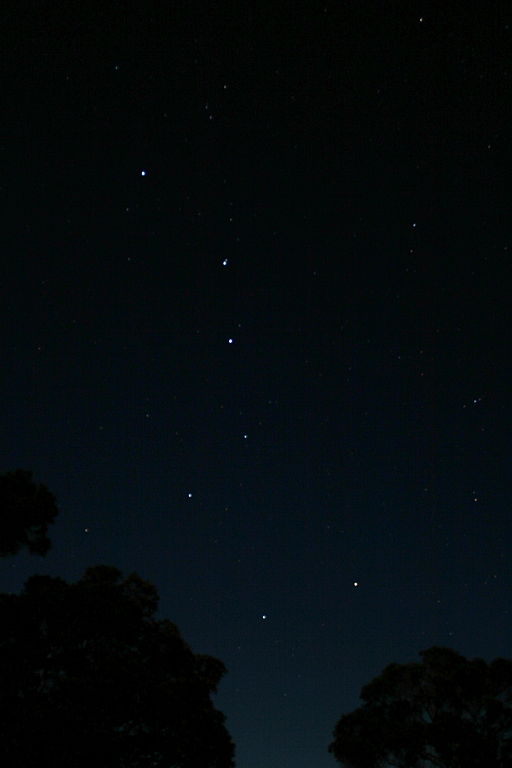
An older name for the stars of the Big Dipper was Odin’s Wain, or Odin’s Wagon, referring to Scandinavian mythology. In China and Japan, the Big Dipper asterism is called the “North Dipper” – each of the seven stars had a specific name. In Shinto, the seven largest stars belonged to Amenominakanushi – the oldest and most powerful of all kami – spirits.
In South Korea, the constellation of Ursa Major is referred to as the “seven stars of the north”. In a related myth, a widow with seven sons found comfort with a widower, but to get to his house they had to cross a stream. Each of the sons placed stepping stones in the river. Their mother, not knowing who put the stones in place, blessed them and, when they died, they became the constellation.
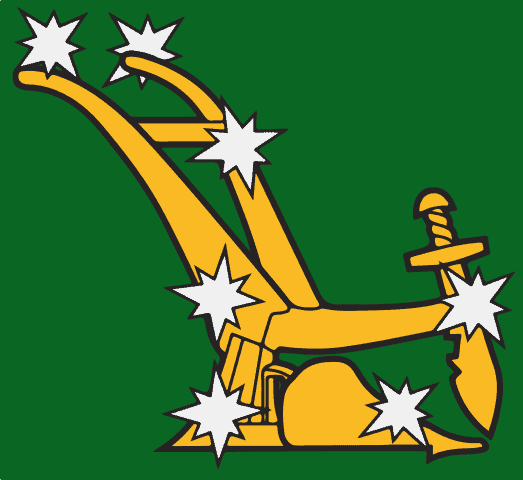
Location
The Big Dipper asterism is located in the constellation of Ursa Major, the third largest constellation in the sky. Ursa Major spreads out for over 1,280 square degrees. The bright stars that form the famous Big Dipper asterism are easy to find by locating Ursa Major.
Ursa Major is best seen throughout the year from most of the northern hemisphere and appears circumpolar above the mid-northern latitudes. From southern temperate latitudes, the main asterism is invisible, but the southern parts of the constellation can still be viewed.
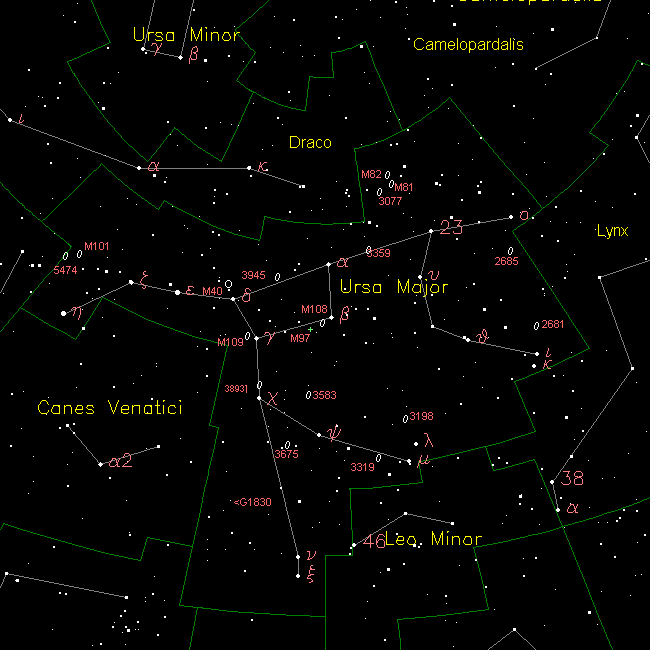
- Right Ascension: 10.67 hours
- Declination: + 55.38 degrees
- Visible: between latitudes +90o and -30o
- Best viewed: at 21:00 (9 p.m.) during April
The constellation of Ursa Major is located in the second quadrant of the northern hemisphere (NQ2), with its neighboring constellations being Bootes, Camelopardalis, Canes Venatici, Coma Berenices, Draco, Leo, Leo Minor, and Lynx. The bright stars of the Big Dipper mark the celestial bear’s tail and hindquarters.
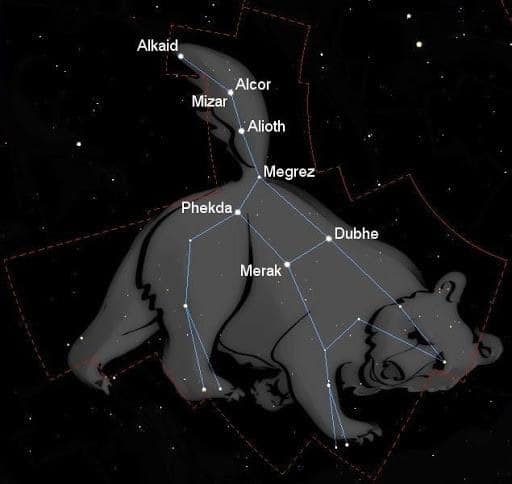
The constellation of Ursa Major belongs to the Ursa Major family of constellations, along with Bootes, Camelopardalis, Canes Venatici, Coma Berenices, Corona Borealis, Draco, Leo Minor, Lynx, and Ursa Minor.
The Big Dipper asterism can be found in different parts of the sky at different times of the year. In Spring and Summer, both the Big and Little Dipper are higher overhead, and in Autumn and Winter, they are closer to the horizon. The rule is, spring up and fall down.
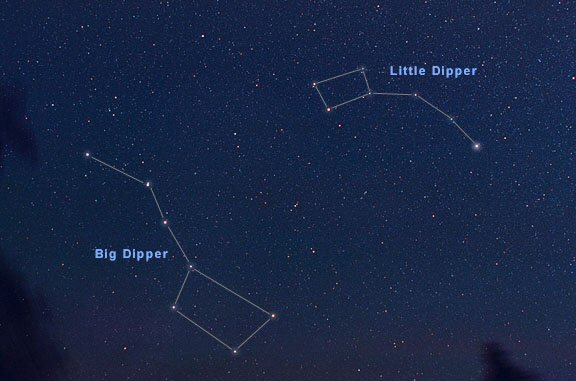
The Big Dipper changes in appearance from season to season. In autumn, it rests on the horizon in the evening, while in winter evenings, the handle appears to be dangling from the bowl. During spring, it is upside down in the evening, and in summer the bowl leans towards the ground.
Many deep-sky objects are located in the same region of the sky as the Big Dipper. Some of these deep-sky objects are: the Whirlpool Galaxy, under the Big Dipper’s handle, the Pinwheel Galaxy – can be found even with binoculars, the double star Winnecke 4, the spiral galaxy Bode’s Galaxy, the irregular Cigar Galaxy, the planetary nebula Messier 97 – Owl Nebula, or the spiral galaxies Messier 108 and Messier 109.
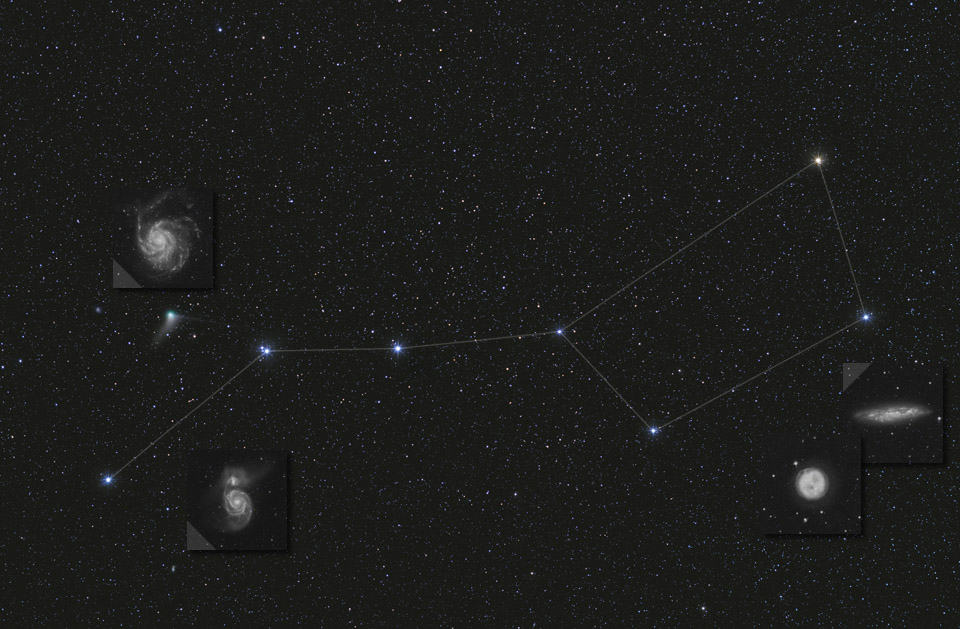
Big Dipper Guide to Other Stars
The Big Dipper asterism can be used as a guide towards finding other bright stars. The arc of the Big Dipper’s handle leads to Arcturus, the celestial bear keeper, the brightest star in the constellation of Bootes, the celestial Herdsman.
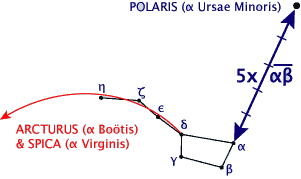
Following a line further leads to Spica, the 17th brightest star in the night sky, and the brightest star in the zodiacal constellation of Virgo. Two of the stars marking the cup of the Big Dipper lead the way to Polaris, the current North Pole Star, which then reveals the Little Dipper asterism. Another pair of stars, Megrez and Phecda, point the way to Regulus, the brightest star in the zodiacal constellation of Leo, and Alphard, the brightest star in the largest constellation of the sky, Hydra.
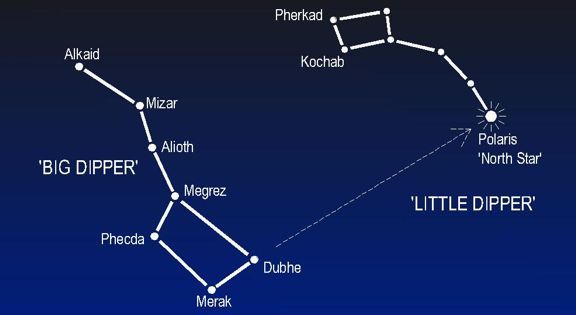
The line from Megrez to Dubhe points the way to Capella in the constellation of Auriga, and one drawn from Megrez to Merak leads to Castor in the zodiacal constellation of Gemini.
Big Dipper Stars
The bright stars that form the Big Dipper asterism are relatively close to each other, from our perspective here on Earth. Some of these stars are among the brightest in the night sky.
Alioth
Alioth, designated as Epsilon Ursae Majoris, is the brightest star in Ursa Major, and the brightest of the seven stars of the Big Dipper asterism. Alioth is the third star of the asterism’s handle, closest to the bowl, and much brighter than most of its neighbors.
Alioth also shares the 31st place as the brightest star in the night sky with Alnitak – one of three stars that make up the Orion’s Belt asterism.
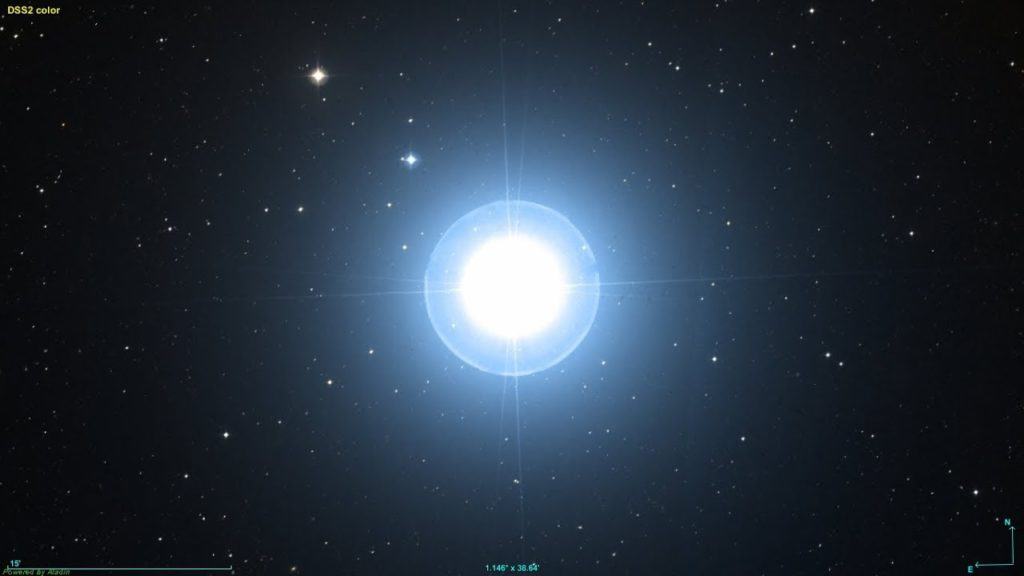
Alioth is a blue-white giant or subgiant star with a peculiar spectrum, having calcium K-lines in it. It is located at 86 light-years from Earth, and it is 102 times brighter than our Sun.
Alioth has an apparent magnitude of 1.77, it is also classified as a Canum Venaticorum variable star – meaning, it varies in brightness due to its magnetic field and its chemical peculiarity. Alioth has 291% of our Sun’s mass, and around 414% its radius. Its magnetic field is 100 times greater than Earth’s.
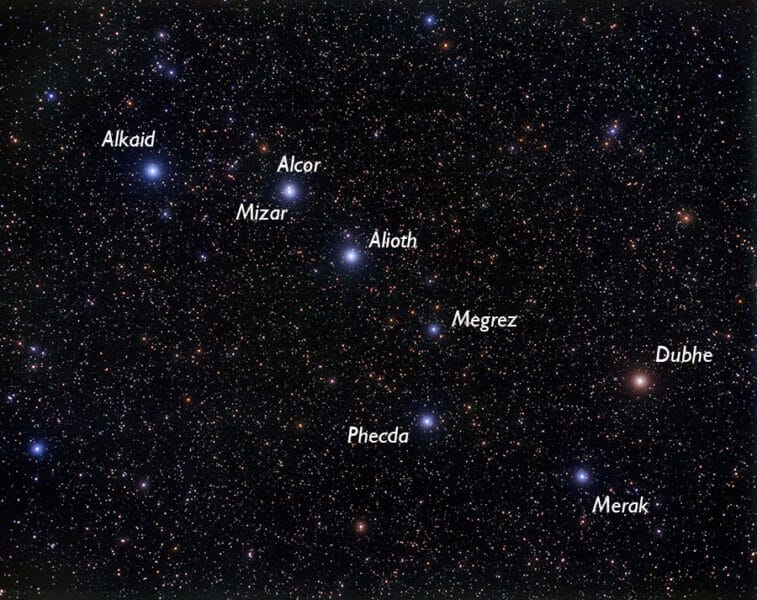
Alioth, along with Dubhe, and Alkaid, are among the 58 navigational stars selected for celestial navigation. Only the brightest and the most easily recognizable stars are part of this group.
Dubhe
Dubhe, designated as Alpha Ursae Majoris, is the second brightest star in Ursa Major. It is also a spectroscopic binary star system, being the 33rd brightest star in the night sky, sharing this title with Mirfak, the brightest star in the constellation of Perseus.
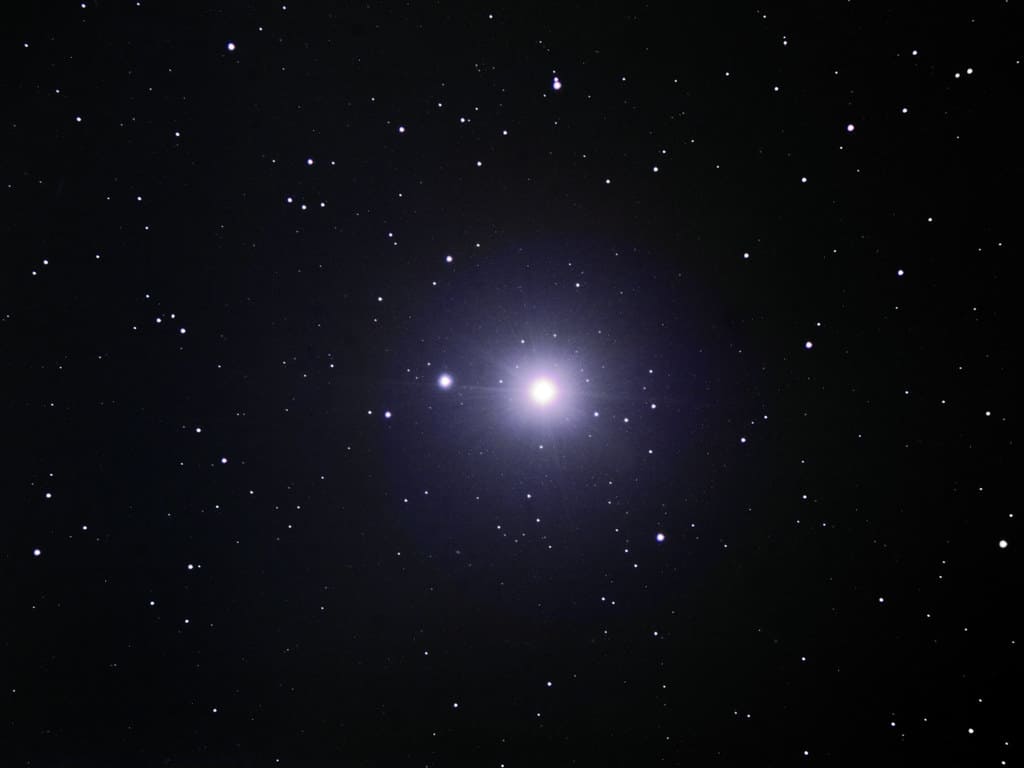
Dubhe, along with Merak, are known as the Pointer Stars which are used to find the north pole star (which is currently Polaris). The primary star, Dubhe A, is an orange giant star having an apparent magnitude of 1.79.
Dubhe is located at around 123 light-years away from us, and it is around 316 times brighter than our Sun. Dubhe has around 425% of our Sun’s mass. Dubhe is around 2% fainter than Alioth. Dubhe is situated in the bowl of the Big Dipper asterism.
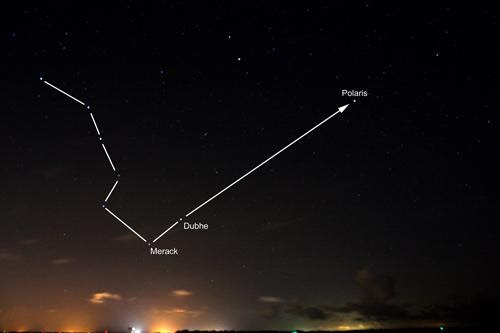
Merak
Merak, designated as Beta Ursae Majoris, is the fifth brightest star in Ursa Major, having an apparent magnitude of +2.37. It is a bluish-white subgiant star that has exhausted its hydrogen supplies, and thus it has begun to cool down.
Merak is 270% more massive than our Sun, having 300% of its radius, and it generates enormous amounts of energy, being 63.015 times brighter than our Sun. Merak is one of the four stars which form the bowl of the Big Dipper.
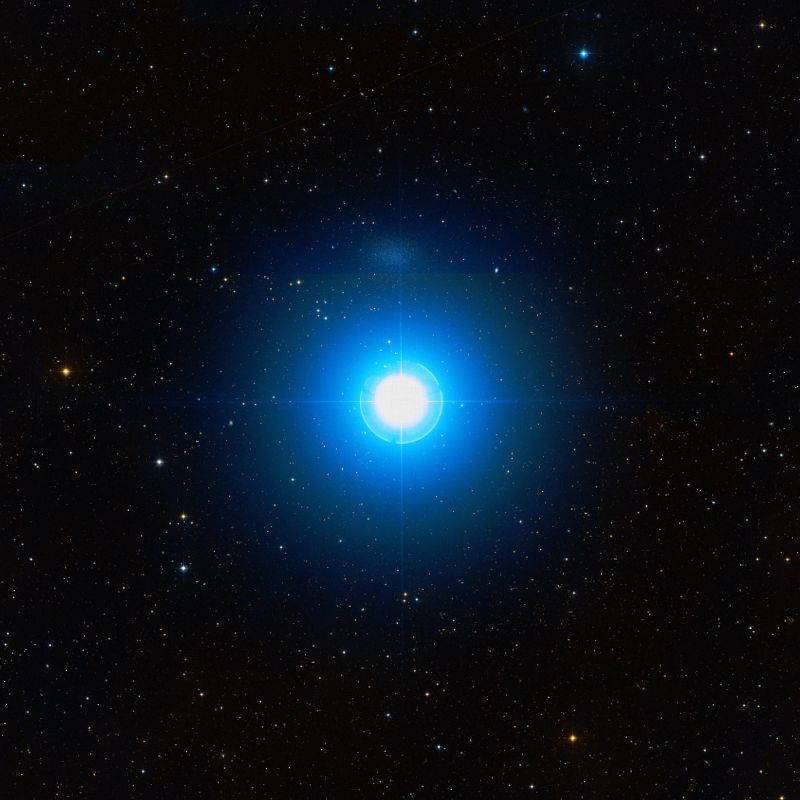
Merak is located at around 79.7 light-years away from us, and it is part of the loose open cluster named the Ursa Major Moving Group. Since Alkaid and Dubhe aren’t part of the Ursa Major Moving Group, they will eventually lead to the Big Dipper’s dissipation in the course of the next several thousands of years.
Phecda
Phecda, designated as Gamma Ursae Majoris, is an Ae star, which is surrounded by an envelope of gas that is adding emission lines to its spectrum.
Phecda is the sixth brightest star in Ursa Major, having an apparent magnitude of 2.4. The star is located at around 83.2 light-years away from us.
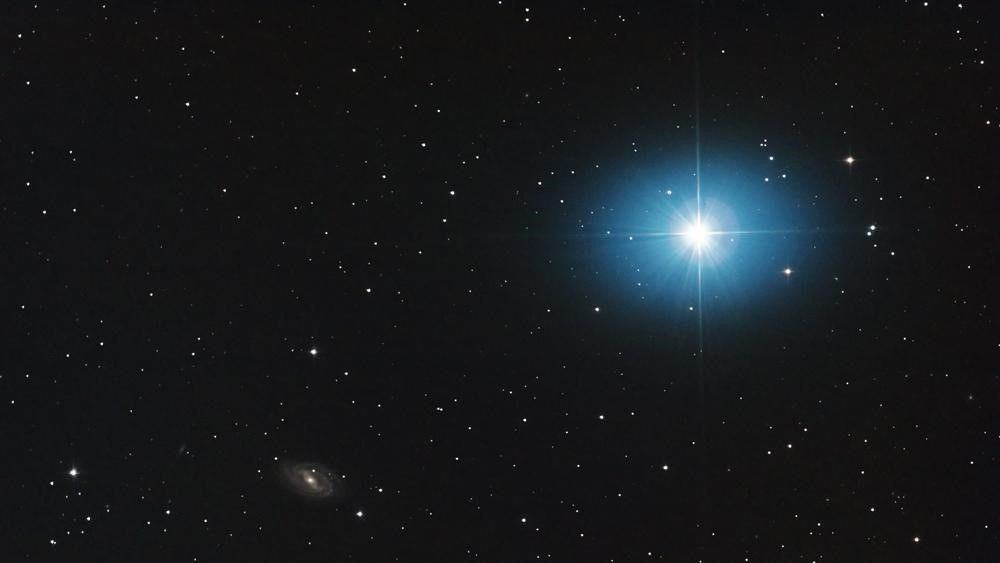
Phecda is white hydrogen fusing dwarf, having 294% of our Sun’s mass, and 304% of its radius. It is 65 times brighter than our Sun. This star is a fast spinner, having a rotational velocity of around 178 km / 110.6 mi per second.
Phecda is one of the stars forming the Big Dipper’s bowl and the Great Bear’s hindquarters, it is the lower-left or southernmost star of the Big Dipper’s bowl.
Megrez
Megrez, designated as Delta Ursae Majoris, is the dimmest of the seven stars in the Big Dipper asterism, having an apparent magnitude of +3.31. It is the 11th brightest star in Ursa Major.
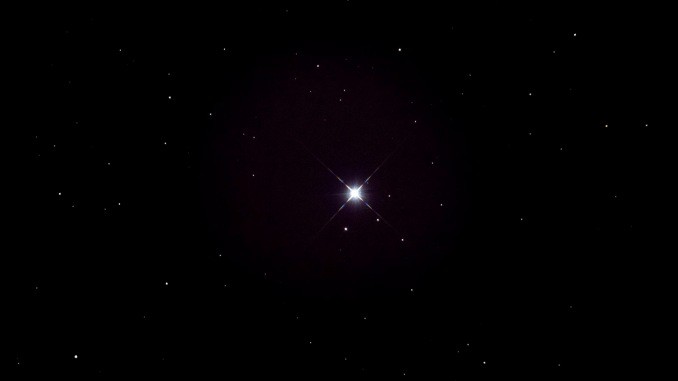
Megrez is a hydrogen-fusing dwarf still on the main sequence, located at around 80.5 light-years away from us. This star has 163% of our Sun’s mass, 140% its radius, and it is around 14 times brighter.
Megrez is a young star, having an estimated age of 300 million years. It rotates even faster than Phecda, having a rotational velocity of around 233 km / 144.7 mi per second.
Megrez is the 11th brightest star in Ursa Major, the upper left star of the Big Dipper bowl, connecting the bowl to the handle, formed by the brighter Alioth, Mizar, and Alkaid.
Mizar
Mizar, also designated as Zeta Ursae Majoris, is a quadruple star system with a combined magnitude of 2.04. It is located at around 82.9 light-years away from us.
Mizar is the fourth brightest star in Ursa Major. The primary star is a blue-white hydrogen fusing dwarf, which has around 220% of our Sun’s mass, and 240% its radius.
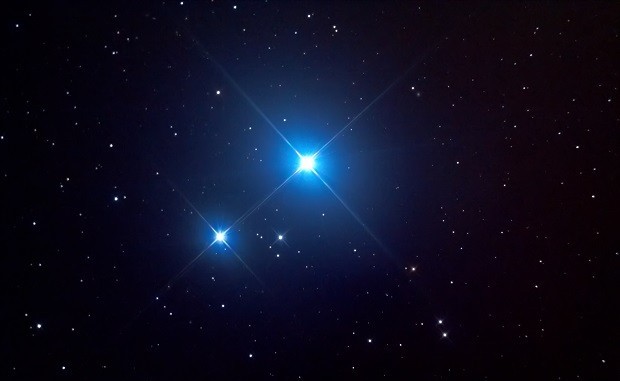
Mizar is 33.3 times brighter than our Sun, and it is the first telescopic binary star discovered, this discovery took place in 1908.
Mizar is the middle star of the Big Dipper’s handle and it forms a naked-eye double with Alcor, a fainter binary star located at a separation of about 12 arcminutes. It is the fourth brightest star in Ursa Major.
Alkaid
Alkaid, designated as Eta Ursae Majoris, is the third brightest star in Ursa Major, and also the 38th brightest star in the night sky, sharing the title with Sargas.
Alkaid is a blue main-sequence star located at around 103.9 light-years away from us. It was once one of the 15 Behenian Fixed Stars – a group of stars used in medieval times in magic rituals.
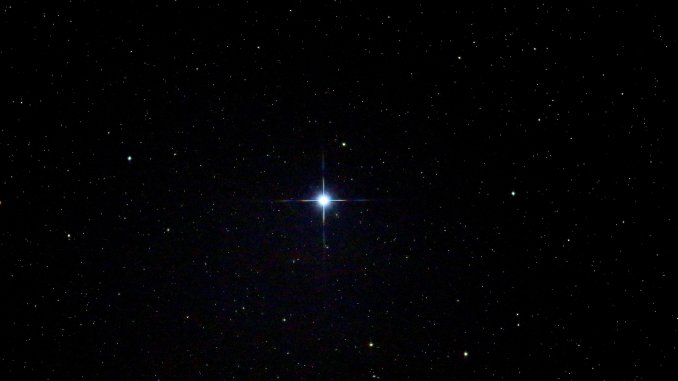
Alkaid is 594 times brighter than our Sun, having 340% its radius, and around 610% of its mass. Alkaid’s spectrum has served since 1943 as one of the stable anchor points by which other stars are classified. It is an X-ray emitting star with broadened absorption lines in its spectrum due to its rapid rotation ( 150 km / 93.2 mi per second ).
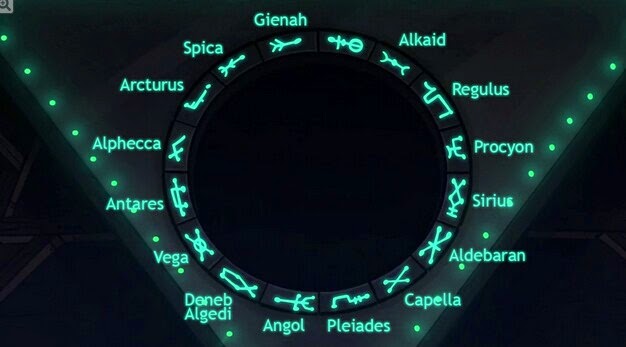
Its fast rotation results in its equatorial radius being bigger than its radius at the poles, leading to temperature variations. Some other stars which appear to share this trait, are Vega or Achernar.
Alkaid is the leftmost star of the Big Dipper’s handle, also marking the Great Bear’s celestial tail.
The Future
The stars of the Big Dipper will be at different locations in around 50,000 years or so. This will result in the asterism changing its shape and facing the opposite side.
However, the Big Dipper asterism will continue to be visible, and not greatly deformed, for more than 100,000 years from now on.
Did you know?
- In England and the United Kingdom, the Big Dipper is known as the Plough. The symbol of the Starry Plough has been used as a political symbol by Irish Republican and left-wing movements.
- In the Finnish language, the asterism is sometimes called by its old Finnish name, Otava. The meaning of the name has been almost forgotten in Modern Finish, it means salmon weir.
- The ancient Romans knew the seven stars as the “seven plow oxen” or Septentrio, with only two of the seven stars representing oxen and the others forming a wagon pulled by the oxen.
- A couple of Native American groups saw the bowl as a bear and the three stars of the handle as either three cubs or three hunters following the bear.
- In Slavic languages and Romanian, the Big and Little Dipper are known as the Great and Small Wagon, while the Germans know the Big Dipper as the Great Cart.
Sources:
Image Sources:
- https://upload.wikimedia.org/wikipedia/commons/thumb/c/c4/Big_dipper_from_the_kalalau_lookout_at_the_kokee_state_park_in_hawaii.jpg/512px-Big_dipper_from_the_kalalau_lookout_at_the_kokee_state_park_in_hawaii.jpg
- https://upload.wikimedia.org/wikipedia/commons/thumb/c/c6/Starry_Plough_flag_%281914%29.svg/523px-Starry_Plough_flag_%281914%29.svg.png
- https://legendsofthestars.weebly.com/uploads/1/7/5/0/17509023/2794715_orig.jpg
- https://apod.nasa.gov/apod/image/1601/lf_dipper_messier.jpg
- https://www.universetoday.com/wp-content/uploads/2009/01/ursamajor.png
- https://lh3.googleusercontent.com/proxy/h0V_fmBVwMgHdq_6q3anHYy5DivoXQtppcWMeEQHMMWup1n_D6mWUP_WI8MRRch7ByYp5_PL8z9_r_JbfyNQYPx3H2mtJe-kmIT5TAy8Ec792pp00yFT6JYS8KZuQt30
- https://upload.wikimedia.org/wikipedia/en/b/b6/BigDipper-guide.PNG
- https://sites.google.com/site/rzconstellationmythology/_/rsrc/1401892260407/big-dipper/Big%20%26%20Little%20Dipper.jpeg?height=218&width=400
- https://i.ytimg.com/vi/H-2U8hmxw7I/maxresdefault.jpg
- https://skyandtelescope.org/wp-content/uploads/Fujii-Big-Dipper-Labeled_900x713_v2-757x600.jpg
- https://live.staticflickr.com/8316/8069610431_e690a50d5c_b.jpg
- https://lh3.googleusercontent.com/proxy/NQrp6sWj2YS4QTvOffILTOSxSnSOk1r-iOvrSXFVhNi9sm1e80wYdl5syPozLcQXqII02RKJUSy5a2MTGhUhY968uzn51R0rgE7HCa2Bq6S0HuoGhfkI
- https://www.constellation-guide.com/wp-content/uploads/2015/04/Regulus-640x640.jpg
- https://i.pinimg.com/originals/83/c2/da/83c2dab13fcb083bac9075581133de80.jpg
- https://www.astronomytrek.com/wp-content/uploads/2017/09/Megrez-in-Ursa-Major.jpg
- https://www.astronomytrek.com/wp-content/uploads/2017/09/Alcor-Mizar.jpg
- https://www.astronomytrek.com/wp-content/uploads/2017/08/Alkaid-Eta-Ursae-Majoris.jpg
- https://cayelincastell.com/wp-content/uploads/2017/10/behenian-star-glyphs.jpg
